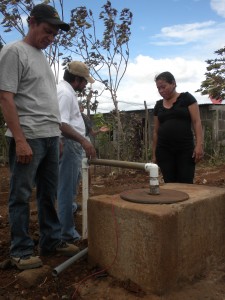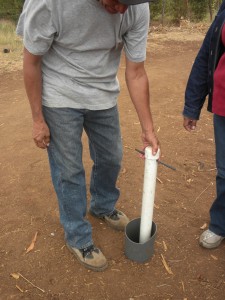Bringing Water to an Entire Community
/Last week I got back from my first trip to Tipitapa.
My time there was packed with so many amazing activities—drives out to over a dozen rural communities, visits with young people involved in our libraries and softball programs—that it’s hard to pick what to write about. But for now I’ll focus on just one community, Marvin Salazar, we visited to follow up on a water project.
After turning off the highway and driving down a bumpy dirt road for a spell, we pulled up in front of an open air church to meet with members of the Water Committee and greater community.
The wind was picking up, so we moved our meeting to a small building beside the church to hear how local organizers put together a water project that delivers water directly to households in their community. As the committee’s president, Juan de Fuentes, described their work, I was wowed by the level of organization this project involved.
After having organized to get electricity in their community last year, community members used support from Dos Pueblos to install a large electric pump that can deliver water directly to people’s homes. Each household bought into the water system by purchasing the piping for their units (about $13 each), and in an effort to make the process as transparent as possible, the Water Committee made a point to manage paper, not money—collecting receipts that showed each household had made its contribution to the project. Finally, in an effort to better manage their water supply and maintain their pump, the Water Committee split the community into four sectors and installed switches in the piping system so that water delivery goes sector by sector, with each receiving two hours of access at a designated time each day.
As we walked through Marvin Salazar, we got to see their new infrastructure at work, stopping at the sector switches and watching as people took advantage of the outdoor taps at their homes. It was inspiring to see so much good come from such a small investment of resources. As a first-time visitor in the area, I felt hopeful that our partnerships with local organizers can make a tremendous impact in people’s lives. But as a volunteer in the US, I also felt compelled to do more to meet the level of work being done by volunteers in Nicaragua. Walking through the most remote area of the community, where more than 400 houses are still waiting for piping to be installed, I looked forward to the next few months of work, and to my next visit, when the piping trenches will be filled in, and the water will be flowing in every home.




